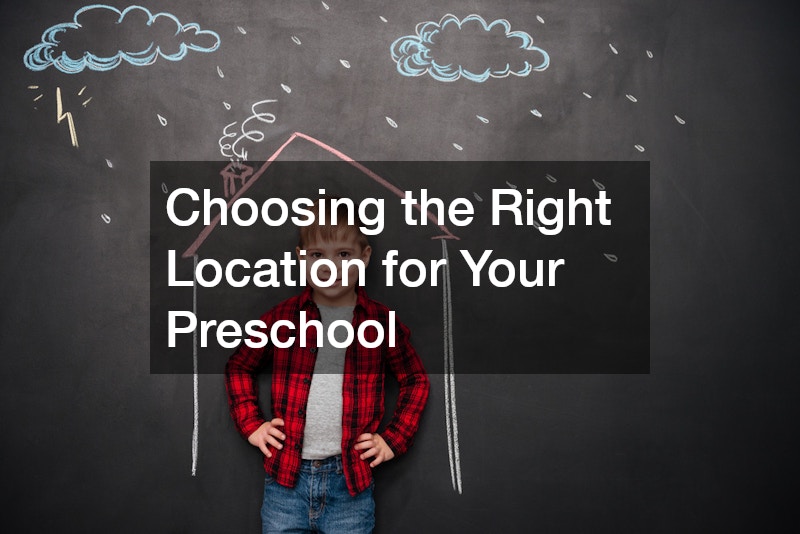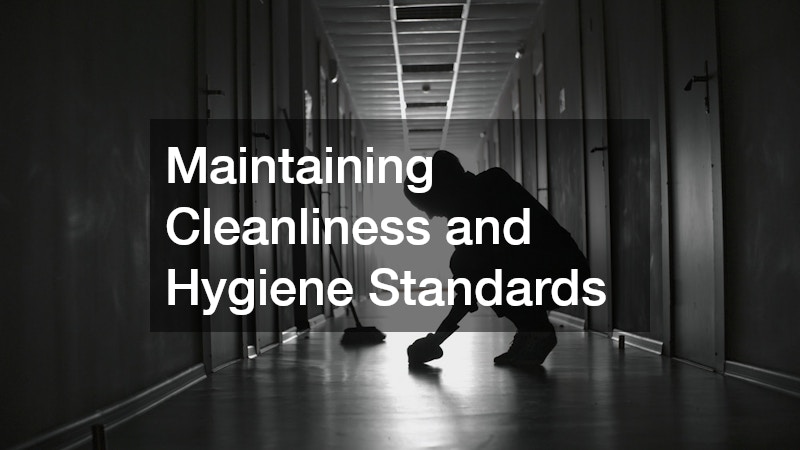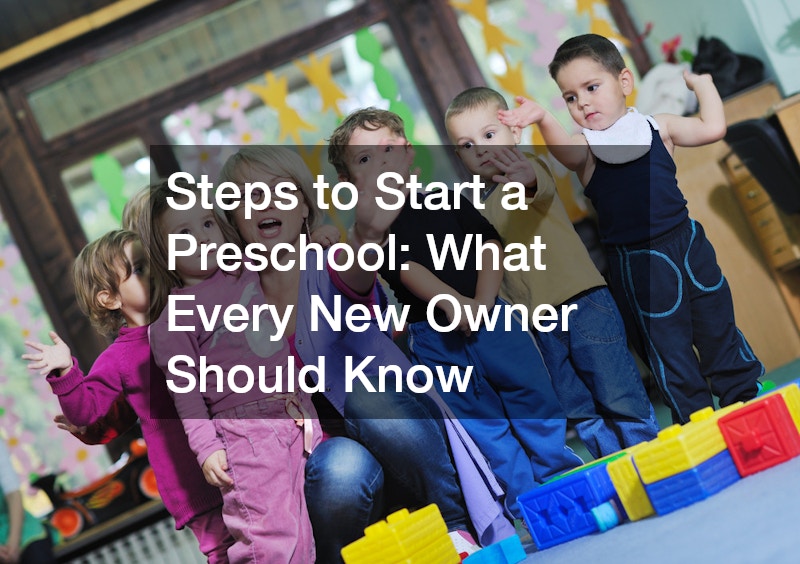Starting a preschool is a rewarding endeavor that shapes the foundation for young children’s educational journey. For many educators and entrepreneurs, opening an early learning center is more than just a business venture — it’s a commitment to nurturing the growth and development of future generations. The steps to start a preschool, however, involve careful planning, attention to detail, and a thorough understanding of the many components that contribute to a safe, welcoming, and effective learning environment.
From selecting the ideal location to creating a space that inspires curiosity, every aspect plays a crucial role in the success of a preschool. Parents entrust educators with their children during some of the most formative years, which means the facility must meet high standards for safety, cleanliness, and education. Meeting regulatory requirements and securing the proper licenses are foundational steps that ensure the preschool operates legally and ethically.
Beyond the internal environment, the accessibility and aesthetics of the preschool are equally important. Families often choose centers based on convenience and first impressions, so features like parking, signage, and overall curb appeal have a significant impact. Crafting a brand that communicates professionalism and warmth helps build trust and attract the right community of families.
Every element, from flooring choices that ensure comfort and safety to janitorial services that maintain hygiene, contributes to the overall experience for both children and staff. Regular maintenance and system inspections prevent disruptions and keep the center running smoothly. With so many moving parts, understanding the comprehensive steps to start a preschool can feel overwhelming, but breaking the process down into manageable stages makes the journey achievable.
This article provides a detailed guide to the key considerations and practical steps needed to open a preschool. Whether you’re an experienced educator or new to the field, this guide highlights essential elements to focus on and offers advice for navigating the complex but fulfilling process of launching an early learning center.
- Choosing the Right Location for Your Preschool
- Understanding Licensing and Regulations for Your Facility
- Creating a Safe and Stimulating Environment for Children
- Maintaining Cleanliness and Hygiene Standards
- Scheduling Regular Safety and Equipment Checks
- Planning Accessible and Safe Parking for Families
- Enhancing Visibility With Clear and Attractive Markings
- Designing an Inviting Entrance to Attract New Families
- Finding Professionals to Craft Your Preschool’s Branding
- Selecting Durable and Comfortable Flooring Options
Choosing the Right Location for Your Preschool

Selecting the right location is one of the most critical steps to start a preschool. The location sets the stage for the center’s accessibility, safety, and community integration. Ideally, the preschool should be situated in a neighborhood with young families and close to residential areas, schools, or workplaces. This proximity helps parents easily drop off and pick up their children.
The physical space itself must meet certain requirements. It should be spacious enough to accommodate classrooms, play areas, and administrative offices, while also allowing room for future expansion. Accessibility is key, including entrances that accommodate strollers and wheelchair users. Safety is another priority — a location away from busy roads, industrial sites, or other hazards reduces risks.
Community zoning laws and local regulations might limit where a child care center can operate. Researching these regulations early in the process ensures compliance and avoids costly setbacks. Additionally, the neighborhood’s demographics and demand for early learning services will influence enrollment potential. Partnering with real estate professionals familiar with education facilities can help identify the best options.
When scouting locations, it’s also helpful to consider nearby amenities such as parks, libraries, and family-friendly businesses. These contribute to the overall appeal of your preschool and can be leveraged in your marketing efforts. Conducting surveys or informal interviews with local families might reveal insights about what they value most in a preschool, guiding your location choice further.
Understanding Licensing and Regulations for Your Facility
Navigating licensing and regulations is one of the essential steps to start a preschool that complies with state and local laws. Every child care center must meet specific requirements related to staff qualifications, facility standards, health and safety protocols, and operational procedures. Licensing ensures that the center maintains an environment conducive to children’s well-being and development.
The application process often involves detailed paperwork, background checks, and inspections. It’s important to familiarize yourself with the regulations from your state’s department of early childhood education or equivalent governing body. These rules often dictate staff-to-child ratios, curriculum standards, facility design, and emergency preparedness.
Maintaining compliance is ongoing. Many jurisdictions require annual renewals and periodic inspections to uphold standards. Being proactive with regulations helps avoid interruptions in operations and builds credibility with parents. Consulting with experts who specialize in child care regulations can simplify this complex process and keep you on track.
Beyond licensing, it’s vital to understand insurance requirements, including liability coverage. Protecting your early learning center and its staff from potential risks not only safeguards your business but also reassures families that their children are in a secure environment.
Creating a Safe and Stimulating Environment for Children
Designing a preschool environment that is both safe and stimulating is fundamental to supporting early childhood development. Choosing the right education flooring is part of this effort. Floors must be durable, cushioned, and easy to clean, providing a safe surface for children to play, learn, and move freely.
When considering the steps to start a preschool, creating such an environment should be a top priority. This involves selecting materials and layouts that promote safety and engagement while encouraging exploration. Classrooms should incorporate various learning zones to encourage exploration, creativity, and social interaction. Incorporating bright colors, engaging visuals, and age-appropriate materials helps create an inviting atmosphere. Safety measures like rounded furniture edges, secured electrical outlets, and visible sightlines for caregivers are vital.
Outdoor play areas should be equally well-designed, offering opportunities for physical activity and connection with nature. Safe playground surfaces, shaded areas, and secure fencing enhance safety. An environment that balances structure with freedom allows children to thrive cognitively, emotionally, and physically.
In addition to the physical setup, it is important to integrate sensory and cognitive stimulation tools. Interactive toys, books, and technology designed for early learners support developmental milestones. Natural lighting and good ventilation also contribute to a healthy and inviting space.
Regularly updating classroom materials and decor to reflect themes, seasons, or cultural celebrations can engage children and keep the learning environment fresh and exciting. Equally important is staff training to ensure teachers understand how to utilize the environment effectively for different learning styles and abilities. These elements are essential components in the steps to start a preschool that truly supports young learners’ growth and development.
Maintaining Cleanliness and Hygiene Standards

Maintaining high cleanliness and hygiene standards is a non-negotiable step to start a preschool that fosters a healthy environment. Partnering with reliable janitorial services ensures that classrooms, bathrooms, kitchens, and common areas remain sanitary and free of germs.
Regular cleaning protocols should be established and followed rigorously. This includes disinfecting toys, surfaces, and high-touch areas multiple times a day. Proper waste disposal and laundry management further contribute to health safety.
Training staff on hygiene practices, such as handwashing and illness prevention, supports these efforts. Cleanliness not only protects children and staff from illnesses but also reassures parents that their children are in safe hands.
Consider implementing policies regarding sick children and staff, vaccination requirements, and procedures for handling outbreaks of contagious illnesses. Communicating these policies clearly with parents and staff creates a transparent and trusting atmosphere.
Scheduling Regular Safety and Equipment Checks
System inspections are a crucial part of ongoing operations in any child care center. Scheduling regular safety checks helps identify and address potential hazards before they become serious issues, and is essential in the steps to start a preschool. This proactive approach covers playground equipment, fire alarms, heating and cooling systems, and security features.
Maintenance schedules should be documented and adhered to, with records kept for accountability. Staff should also be trained to report issues promptly. These inspections reduce the risk of accidents and ensure compliance with safety regulations.
Regular checks should also include emergency preparedness drills, such as fire and lockdown drills. Training children and staff on how to respond in these situations helps minimize panic and confusion during real emergencies.
Planning Accessible and Safe Parking for Families
Convenient and safe parking is often an overlooked but important aspect when considering the steps to start a preschool. Working with a parking lot paving contractor can help design and maintain parking areas that accommodate parents comfortably and safely.
Parking lots should have clear traffic flow patterns, adequate lighting, and designated drop-off zones. Accessibility for disabled individuals must be included, with appropriate signage and space allocation. Well-maintained paving reduces hazards like potholes and uneven surfaces.
Good parking planning contributes to smoother daily operations and enhances the overall experience for families visiting the preschool.
Consider the flow of vehicles during peak drop-off and pick-up times to avoid congestion. Clearly marked crosswalks and speed bumps can enhance pedestrian safety. Additionally, well-placed signage directs traffic efficiently and prevents confusion.
Enhancing Visibility With Clear and Attractive Markings

Once the parking area is designed, enhancing visibility with clear and attractive markings is vital. Hiring professional parking lot painters ensures that lines, directional arrows, handicapped spaces, and safety warnings are applied correctly and durably.
Well-marked parking areas reduce confusion and accidents, promoting efficient vehicle movement. Bright, freshly painted markings also improve the aesthetic appeal of the property and communicate professionalism.
Regular maintenance of these markings is important, especially in regions with harsh weather conditions that can cause wear and fading. Periodic repainting keeps the parking area looking fresh and safe.
Designing an Inviting Entrance to Attract New Families
The preschool’s entrance is the first impression for families and visitors. A welcoming and well-designed entryway sets a positive tone and reflects the center’s values. Commercial sign options offer various ways to showcase your preschool’s name and branding prominently.
Features like clean landscaping, clear signage, and accessible doors invite families inside. Lighting and safety features around the entrance ensure it is welcoming at all hours. Creating an entrance that feels secure yet friendly encourages trust and comfort among parents and children alike.
Consider adding features such as a covered drop-off area to protect families from the weather and comfortable seating nearby. The use of colors and materials that reflect the preschool’s branding helps create a cohesive visual identity right from the start.
Finding Professionals to Craft Your Preschool’s Branding
Branding is more than just a logo — it’s how your preschool communicates its identity and mission to the community. Hiring a skilled business sign maker can help develop cohesive branding materials, including exterior signage, banners, and marketing displays.
Professionals can also advise on color schemes, fonts, and design elements that appeal to families and reflect the nurturing environment your preschool offers. Consistent branding across all touchpoints helps build recognition and loyalty.
Strong branding differentiates your preschool from competitors and helps establish a connection with families seeking a reliable, caring environment for their children. Online presence, marketing materials, and physical signage should all align for maximum impact.
Selecting Durable and Comfortable Flooring Options

Selecting the right flooring is a key consideration for both safety and comfort in a preschool setting. Carpets and other educational flooring choices must withstand heavy foot traffic, spills, and frequent cleaning without losing quality.
Comfortable flooring reduces noise and provides cushioning, which is important for young children’s physical activities. Materials should be non-toxic, hypoallergenic, and easy to maintain. Durable flooring extends the lifespan of your facility’s interior and contributes to a healthier learning space.
In addition to carpet, options like rubber flooring, vinyl, and laminate can be considered based on the needs of different areas. For example, classrooms may benefit from softer materials, while hallways and entryways require more durable surfaces. Installing flooring with antimicrobial properties adds an extra layer of protection against germs.
Launching an early learning center is an exciting but complex process that requires careful attention to many critical factors. The steps to start a preschool include more than simply finding a location and opening doors — they involve thoughtful planning of every detail, from legal compliance to the physical environment. Choosing the right site sets the foundation for accessibility and safety, while understanding licensing ensures your center meets all necessary standards for quality child care.
Creating a stimulating and secure environment supports children’s growth, and maintaining cleanliness protects their health. Regular system inspections and well-planned parking enhance daily operations and safety for families. Visual appeal, through clear markings and an inviting entrance, helps attract and reassure parents. Professional branding ties all these elements together, projecting a consistent and trustworthy image.
Flooring choices that balance durability and comfort further elevate the preschool experience for children and staff alike. Each of these steps to start a preschool plays a vital role in establishing a successful and respected early learning center.
Following this comprehensive approach not only prepares your facility to meet regulatory requirements but also builds a nurturing space where children can thrive. The commitment you make in these early steps sets the tone for years of positive impact on your community. For anyone ready to embark on this journey, understanding and implementing these steps to start a preschool is the key to turning vision into reality and creating a safe, joyful place for children to learn and grow.
